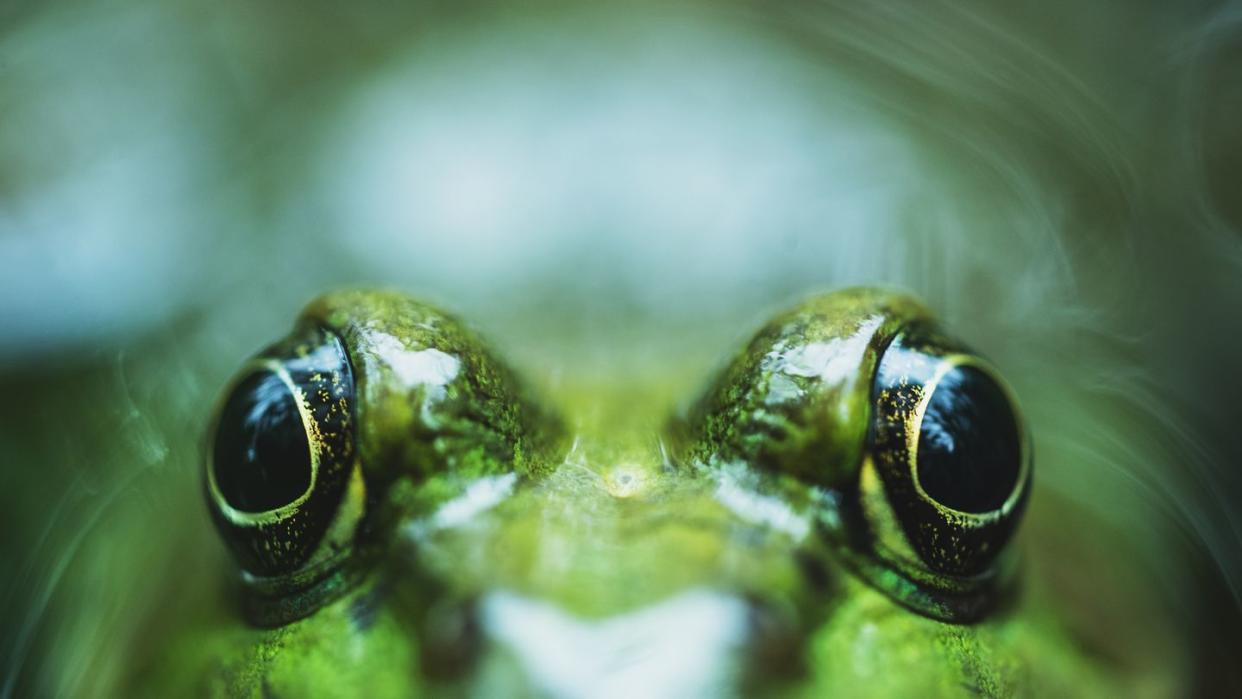Wood Frogs Are Evolving and Getting Weirdly Stronger

A new study looking at the impact of road salt on wood frogs suggests the species may be evolving to better withstand the deadly mineral.
A host of research on road salt’s impact on wood frogs shows a litany of negative effects.
Study authors believe the wood frog may have an evolutionary ability to develop a tolerance to high levels of salt.
Road salt is notoriously not great for the environment, but it’s a potentially lethal mineral for one animal in particular—the wood frog. High levels of sodium chloride can kill the species, but there’s hope for these hoppy little critters.
A new study published in Ecology and Evolution suggests that the higher exposure levels of salt, the more likely the wood frogs evolve a generational tolerance. “It is possible,” the authors wrote, “that repeated exposures over time could favor the evolution of increased salt tolerance.”
Salt can filter into freshwater after being used to melt ice during a storm. Based on the melt’s flow and the runoff nearby, the salt can change the chemistry of entire bodies of water—especially smaller and more stagnant ponds and wetlands. That can add up to a potentially lethal result for the wood frog.
In the study, the research team collected eggs from nine ponds and wetlands in New York state—all located near paved roads or parking lots, and with a wide range of salt concentrations. The team then used the cleverly named “time-to-death experiment” to really look at the salt tolerance levels of the tadpoles as they grew. As the study’s name suggests, the team studied how long tadpoles survived given exposure to salt by taking 15 tadpoles from each body of water and subjecting them to a lethal dose of salt.
“We found that populations collected from ponds with low and intermediate salt concentrations exhibited similar tolerance curves over a 96-hour exposure,” they wrote. “However, the population from a pond with the highest salt concentration exhibited a much higher tolerance.”
And since the wood frog returns to the same breeding grounds generation after generation, the authors believe that, with a relatively high concentration of salt in the homeland, the frogs have started to build up tolerances to the sodium chloride.
Not a single tadpole from the eight ponds without the high level of salt survived beyond day two. The tadpoles from the saltiest of homes showed remarkable resilience, with 60 percent still alive after almost all the other ponds’ tadpoles were dead. And tadpoles from the high-salt pond were the only ones to live beyond the second day.
The pond with the high levels of salt has sat next to a large parking lot for more than two decades, likely ensuring that more than 10 generations of wood frogs have encountered high salt content during breeding.
But before everyone gets too proud of the frogs, the authors do note that the pond with the second-highest level of salt didn’t show the same extended time-to-death tolerance. “We don’t know how they did it,” Rick Relyea, study author and biologist at Rensselaer Polytechnic Institute, told Popular Science, “we just know that they did it.”
With the most polluted pond showing a salt concentration of 744 mg/liter and the next saltiest at 400 mg/liter, the authors believe that an evolutionary shift may require an obscene amount of salt—especially considering that there was no noticeable difference between tadpoles from the pond with 400 mg/liter and the ninth-most-polluted pond at just a single milligram per liter.
The connection between wood frogs and increased salt levels has been a popular research topic for years. The Rensselaer Polytechnic team also studied the impact of salt on the behavior of the wood frogs and noted just one difference between tadpoles form the nine ponds: the more salt, the less activity.
That highly absorbent skin on a wood frog really does suck in the salt, and past studies have found that’s an issue. One study noted that, while some species of frog can dip a toe into salty water, recognize the salt, and then not enter the water, the wood frog doesn’t have that capability. And once in the salt-infested water, other studies say that the salt can delay development, lead to excess bloating, and lead to a 15 percent increase in males being born.
Yet another reason to look into road-salt alternatives. Beet juice, anyone?
You Might Also Like


